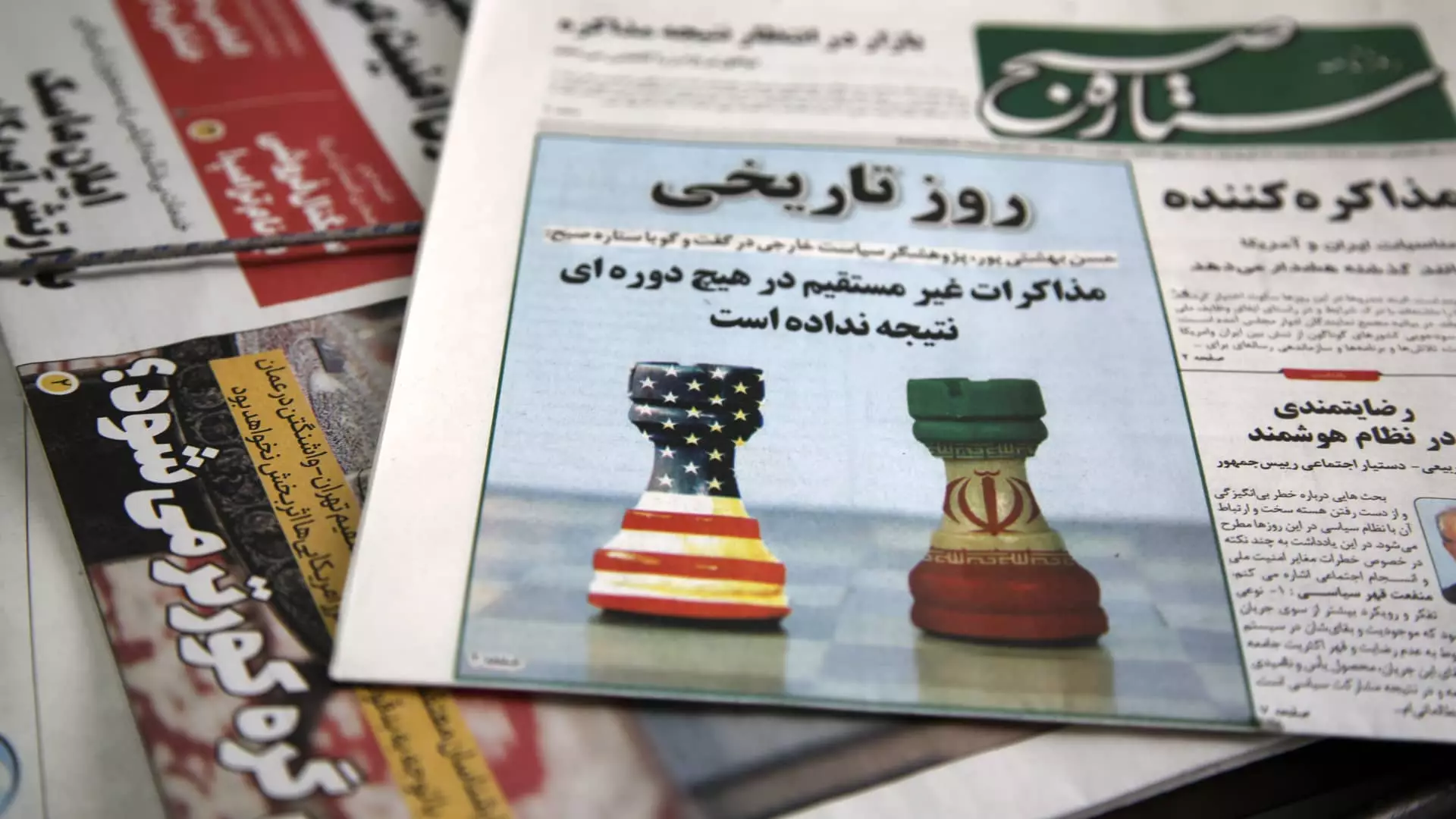The ongoing nuclear negotiations between Iran and the United States resemble an elaborate tango: intricate, beautiful, yet riddled with tension and suspicion. For more than two decades, these two nations have engaged in a precarious dance, marked by shifting political allegiances, fluctuating diplomatic strategies, and a profound lack of trust. As they prepare for yet another round of discussions in Rome, one cannot ignore the palpable sense of frustration that permeates these meetings. The underlying issue is not merely Iran’s ambitions for nuclear power, but a broader struggle for recognition, power dynamics, and the very foundations of international diplomacy.
At the crux of this conflict lies the shattered remains of the 2015 nuclear agreement, which, under Former President Donald Trump’s dramatics, was unceremoniously discarded in 2018. The decision to withdraw and aggressively sanction Iran under the “maximum pressure” strategy has not only escalated tensions in the region but has also set the stage for an immensely complicated diplomatic environment. Trump’s rhetoric – intended to galvanize domestic support – has transitioned the discourse from constructive engagement to incendiary threats. Indeed, while he claims a desire for a “great and prosperous” Iran, his policies have entrenched a culture of fear both in the Iranian government and among its people.
The Role of Mediators: A Double-Edged Sword
Amid this backdrop of escalating tensions, mediators from Oman will attempt to bridge the chasm between these two disparate parties. While intermediaries can provide necessary distance and a neutral platform for dialogue, they can also complicate the intricate dance of diplomacy. The indirect nature of negotiations has an inherent risk; it can diminish accountability and clarity between both sides. Iranian Foreign Minister Abbas Araqchi and Trump’s envoy Steve Witkoff will only address their differences through the lens of Omani facilitators, which could amplify misunderstandings or misinterpretations.
Furthermore, Iran’s Supreme Leader Ayatollah Ali Khamenei’s tempered outlook—expressing neither optimism nor pessimism—reflects a cautious approach. If anything, it signals Iran’s awareness of the precariousness of their position in the negotiations. The Iranian government continues to cling to the notion that any concessions made must be met with unwavering guarantees against future U.S. backsliding. Ironically, it is the very nature of these guarantees that seems to elude both parties, perpetuating a cycle of inaction.
The Reality of Sanctions: The Human Cost
Amid the chess-like maneuvers of political leaders, it is crucial to emphasize the human element overshadowed by diplomatic protocol. The sanctions imposed on Iran have severely crippled its economy, devastating the livelihoods of millions of ordinary citizens. While political leaders argue over uranium enrichment caps and verification protocols, the reality on the ground tells a different story. Inflation is rampant, basic necessities are scarce, and the health crisis exacerbated by the COVID-19 pandemic has only fueled public discontent. In a society already coping with extensive economic and psychological strain, the ramifications of prolonged negotiations can be dire.
In this context, the U.S. and Iran must recognize their common humanity. This engagement should not merely serve as a means to an end for negotiating power or geopolitical superiority; it should embrace a broader understanding focused on the welfare of people on both sides. The stark contrast between the loftiness of diplomatic dialogue and the harsh realities faced by ordinary Iranians illustrates a disconcerting divide that cannot be overlooked.
The Path Forward: A Call for Genuine Dialogue
As the discussions in Rome commence, it is imperative that both parties come prepared—not just with strategies for negotiation but with an earnest willingness to understand and empathize with one another. While the stakes may be political, the approach must be humanistic. Resolving this conflict will not be achieved through threats or mere rhetoric but through authentic dialogue grounded in mutual respect and aims for long-lasting peace.
Returning to a constructive path will require both nations to not only look towards a future with reduced nuclear tension but also to address historical grievances and misconceptions. It seems undeniable that without this transformative step, the endless waltz of negotiations may continue indefinitely, further entrenching hostility and animosity rather than fostering the understanding needed for sustainable progress.



Leave a Reply